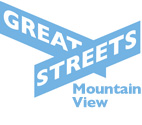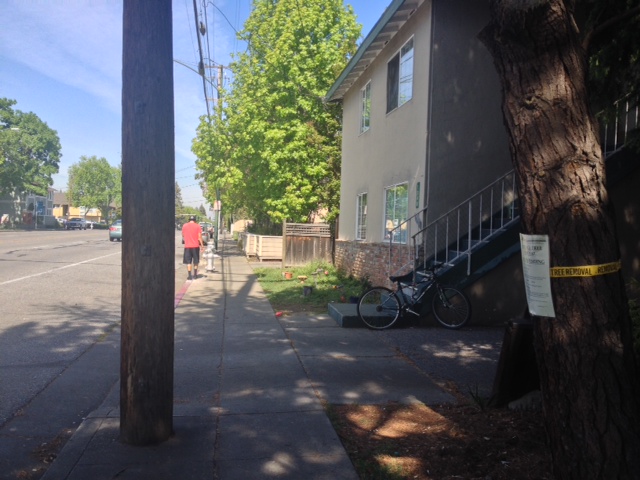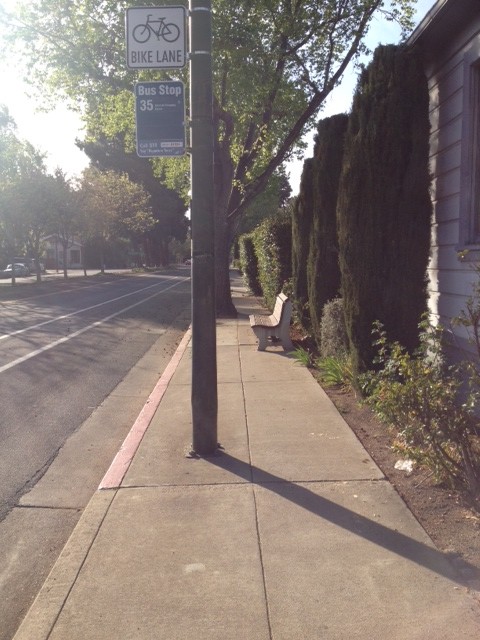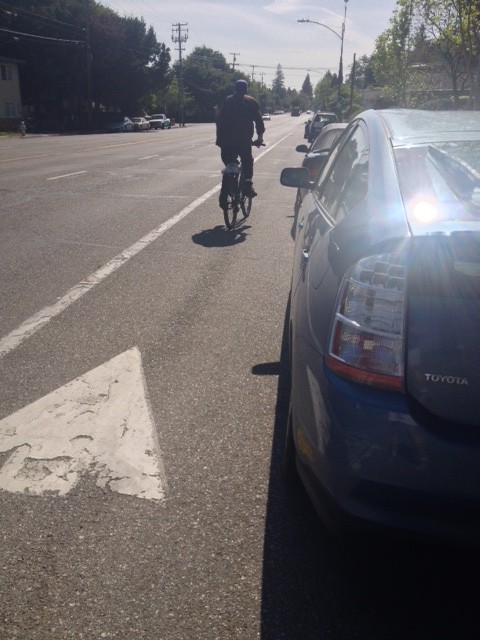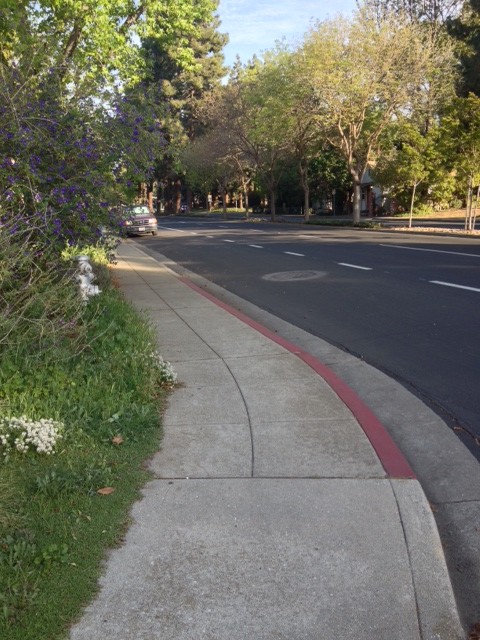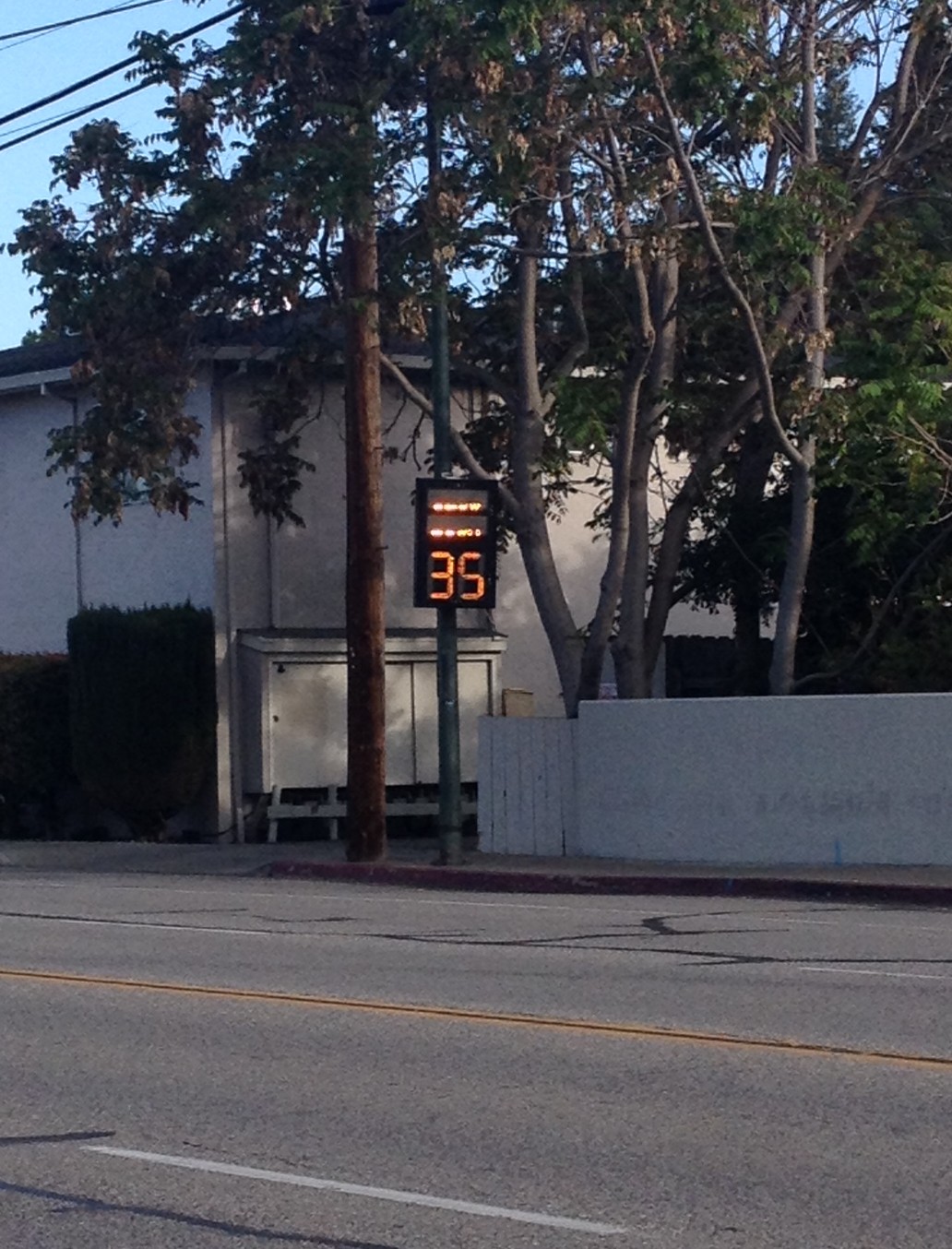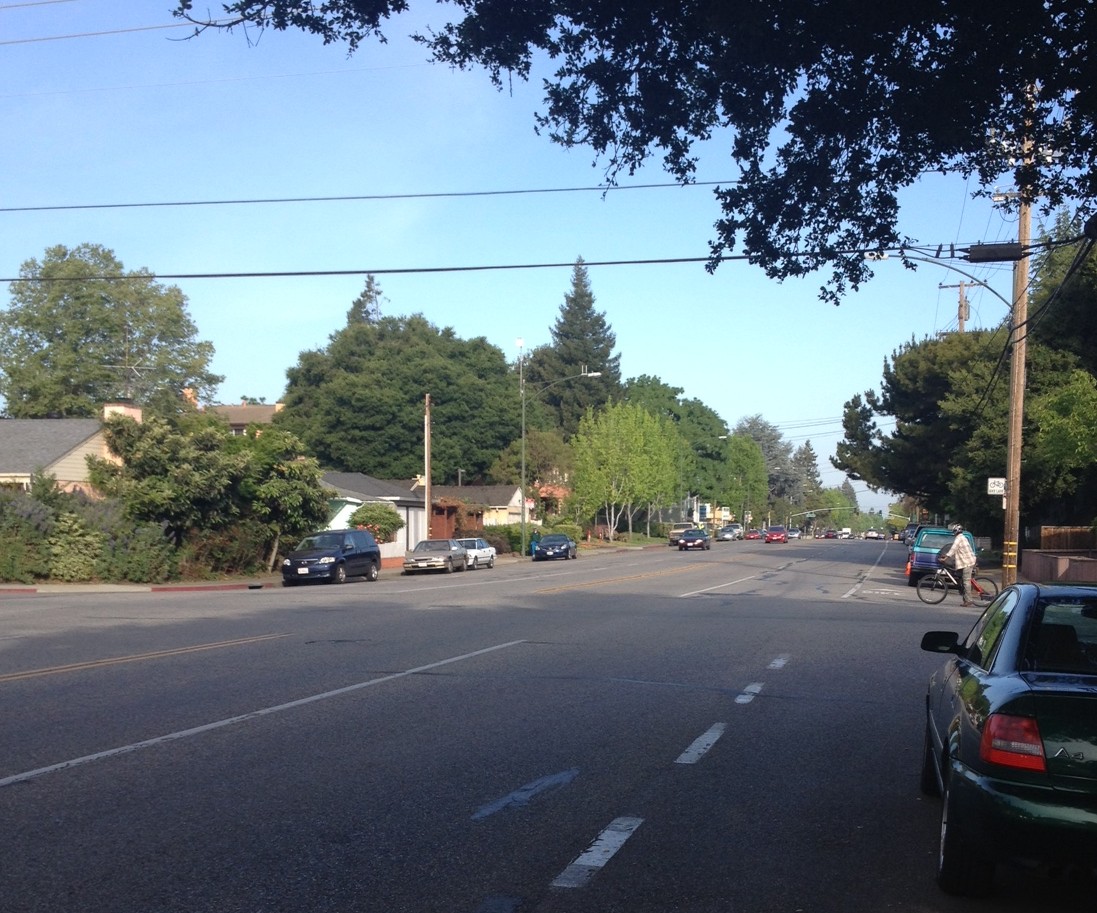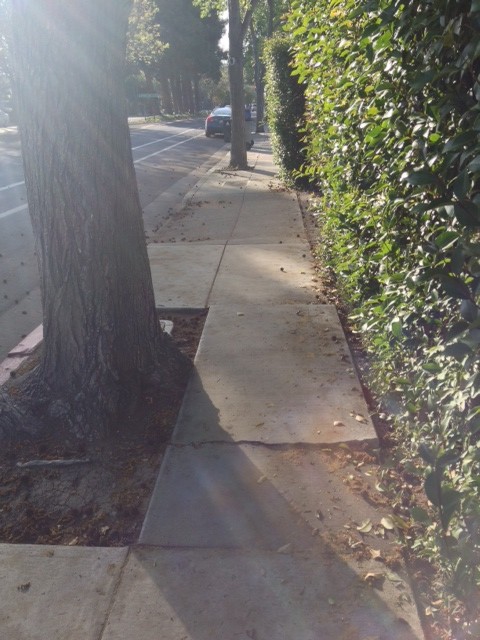Hazardous Conditions on California Street
Current conditions
 Narrow sidewalks: The sidewalks along California Street vary in range from 5 to 6.5 feet in width. On a long stretch from Castro Street to Escuela Avenue, the sidewalk has no planting strip or buffer against automobile traffic. Pedestrians waiting at bus stop benches are particularly vulnerable because parked cars, which would provide a safety barrier, are disallowed.
Narrow sidewalks: The sidewalks along California Street vary in range from 5 to 6.5 feet in width. On a long stretch from Castro Street to Escuela Avenue, the sidewalk has no planting strip or buffer against automobile traffic. Pedestrians waiting at bus stop benches are particularly vulnerable because parked cars, which would provide a safety barrier, are disallowed.
How Can You Get Involved?
Injuries and fatalities
Since 2010, there were three pedestrian fatalities on California Street. All fatalities occurred along the section of California Street between Castro Street to Escuela Avenue. This section of California Street is characterized by narrow sidewalks (5 feet to 6.5 feet wide) and the lack of a physical buffer, such as a planting strip, to protect pedestrians from fast moving automobile traffic.
